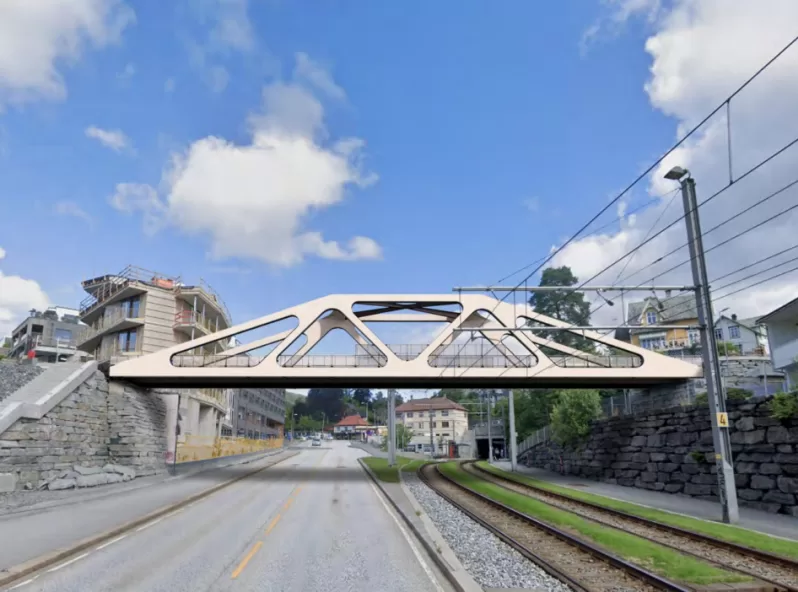Since the inception of carbon fibers in the 1950’s and first use and application in the aerospace industry, carbon fibers have seen an enormous shift in their design, use, and application in the modern world. After a decade of its development, they were also incorporated into the pultrusion technology – a field that was predominated by glass fibers. By the late 80’s and the span of the 90’s, its use became widely adopted in a number of diverse industries, like the automotive and construction sectors.
The 21st century has been marked by climate change, climate action and environmental awareness. Along with this is the infrastructural boom witnessed around the globe, and the application of ever-evolving technology in most, if not all, industrial sectors.
The use of pultrued carbon fiber-reinforced polymer (CFRP) materials has been utilized in the construction of bridges, dams, buildings, wind turbines, power and data cable installations, just to name a few.
Some of the most notable projects that have utilized this technology include:
1. The 650 meters Penobscot Narrows Cable Stayed Bridge in Maine, USA. This was the first use of the innovation in the US, earning the bridge a spot in the top 100 best innovations in the 2006 December edition of the Popular Science magazine. A research on the bridge’s use of carbon fiber-reinforced polymer in its strands also appeared in a 2008 research article.
2. In Michigan, USA, three brides have incorporated carbon fibers in the materials used for their construction. The Bridge Street bridge in Portland used carbon fibers in pre-stressed concrete. The southbound Interstate-75 over the Sexton-Kilfoil Drain in Detroit and the Interstate-94 modernization projects in Detroit also used carbon fiber-reinforced beams.
3. The Paradis truss bridge in Bergen, Norway. An engineering and construction supplier of composite materials in Norway, CSub, oversaw the transportation and installation of the 7.1 meters wide and 42.5 meters long footbridge that weighs approximately 47 tons.
4. Renewable energy infrastructure projects like those handled by:
◦ Sany Renewable Energy with a focus on wind energy projects, and the
◦ Siemens Gamesa Renewable Energy focused on turbine blades for wind energy projects
The paradigm shift to the use of more reliable, economical, and environmental friendly materials in the development and construction of infrastructural projects is inevitably on the rise.
So, what makes carbon fiber reinforced polymers worthwhile in the construction industry?
With an array of critical considerations for any construction project, ranging from design and functionality, budget and costs, to project timeline, quality assurance and control, risk and safety assessment, and the assessment of sustainability and environmental impact, there is great need to make the whole process as efficient, reliable, economical and sustainable as possible.
Carbon fiber pultrusion technology and carbon fiber-reinforced polymer (CFRP) materials effectively answer to these demands in the following ways:
1. One of the lowest weight-to-strength ratios has been recorded in CFRP materials. This has shown to outperform traditional materials known for their strength like steel and aluminum. They feature a lightweight – high-strength combination that allows for lighter structures without compromising on their structural stability.
2. Corrosion resistance. Carbon fiber composites have proven to be effective in environments that present with conditions that would otherwise be harsh to alternatives like wood and steel. The composite materials (will) therefore offer longer lifespans in marine, nuclear or other harsh environmental settings.
3. Fatigue resistance. Carbon fiber pultruded materials show great efficiency when handling loads whose weights repetitively and variably change over time. This has been utilized in bridges and wind turbines, ensuring sustained durability for long periods of time without the need for recurrent maintenance on them.
4. Design flexibility. With more “mind-breaking” and “futuristic” innovations stamping their existence in present times, CFRP materials allow for the complex customization of high-performance design profiles that meet engineering and construction needs without necessarily compromising on structural and safety needs for the construction projects.
5. Thermal stability. Traditional materials like steel often have great varying fluctuation degrees when exposed to different temperatures. Carbon fiber composites on the other hand show great stability under varying temperatures – thus presenting as a good alternative for mega structures where minute variations in components of the structure are key in predicting the overall performance on the buildings, dams, or other mega installations.
6. Environmental sustainability. With their proven efficiency in production, installation and maintenance, these materials have shown to be better to, and for the environment unlike their traditional counterpart like wood. Their use is definitely set to continue in an accelerated manner because of this.
What does the future look like for CFRP materials?
They will definitely attract those invested in green construction and sustainable infrastructure. Most projects that apply these broad principles prioritize longevity and low environmental impact.
CFRPs will also greatly feature on renewable energy sector as they have proven to be more durable and energy efficient in their installation and maintenance.
Smart cities and those that aim for advanced infrastructure will also have this technology in use. They will feature in the resilient structures needed for urban infrastructure, smart and renewable energy grids, lightweight modular construction and transportation systems.
Among the game changers in the 21st century construction industry, carbon fiber pultrusion technology and their composite materials are definitely a key-mover with a good future prediction.

